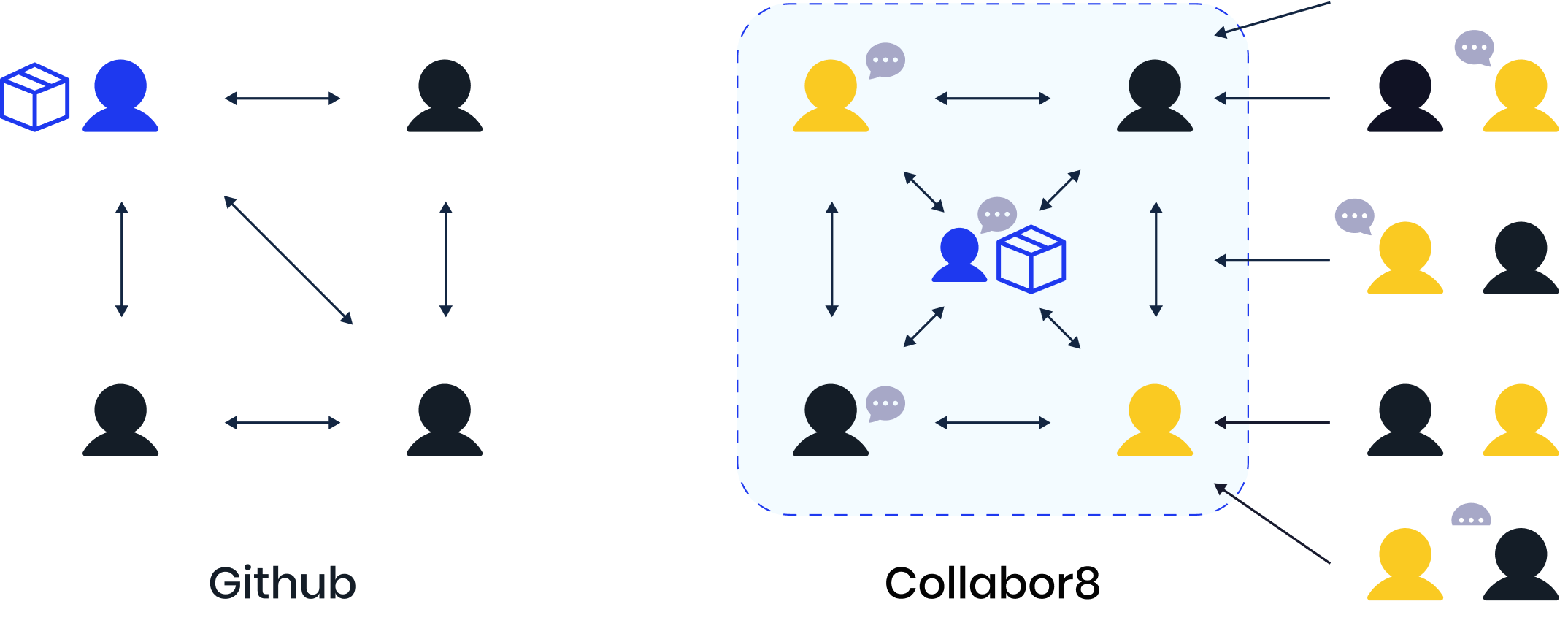
Design an open-source collaboration platform for designers
Collabor8 is my graduation project, and I chose to present it over my corporate work because it’s one of the few projects where I had complete creative control. With its broad scope, I was able to lead the entire design process, not just focus on creating screens. I believe this project better reflects my mindset and approach to design. For this case study, I'll focus more on the design part.
Collabor8 is an open-source collaboration platform where developers and designers work together to build free & Open-source softwares and push more open design processes.
The platform will serve as a marketplace for Project Maintainers to promote F/OSS projects and their open contribution requests to attract Designers/Contributors to participate. Furthermore, the platform also allow Maintainers to manage contributions submited by Designers within the projects. The users, contributors and maintainers can communicate or discuss via a forum or chat.


I conducted desk research on academic papers about the open-source movement, followed by user research to understand motivations behind maintaining and contributing to projects. I then triangulated both sources to validate the problem and assess its relevance.
From the initial research, here are key findings:
Based on the research findings, I defined a feature list, created the information architecture and lo-fi wireframes, then tested them with users.
I updated the feature list and information architecture based on user feedback. For the user interface, I fixed the usability issues and added initial color scheme.
Based on feedback, I refined and unified components, styles, and UI elements. I identified key UX patterns and prioritized building UI templates for them. Finally, I created a hi-fi interactive prototype for the final round of testing.
I refined the design, completed the remaining user flows, and added micro-interactions to improve usability and engagement to the platform.